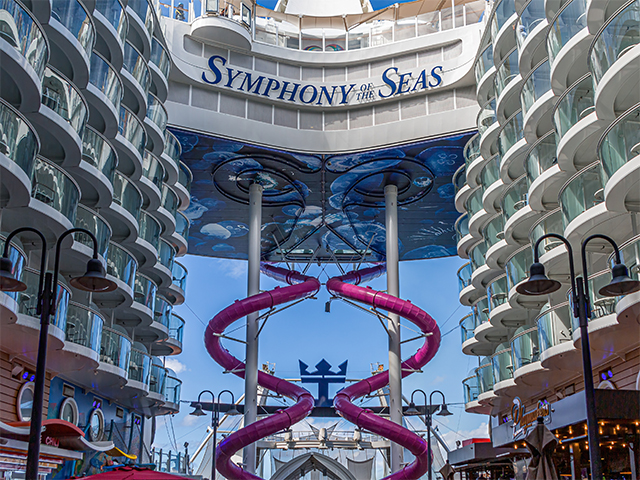Port of Civitavecchia: Leonardo da Vinci's secret masterpiece?
The Port of Civitavecchia in Leonardo Da Vinci's project? Some leaves of the Codex Atlanticus show the designs of Leonardo for BramanteLeonardo da Vinci, artist, scientist, brilliant and talented man of the Italian Renaissance, he is considered the greatest genius of mankind.
In this article, thanks to a precious contribution by Roberta Galletta, historian and author of the book "La Darsena Romana - Il Porticciolo di Civitavecchia" (The Roman Harbour - The Small Port of Civitavecchia), we will tell you how the life of this remarkable personality was unarguably connected to the Port of Civitavecchia.
In fact, not only did Leonardo Da Vinci very likely pass through Civitavecchia, but also his ideas profoundly contributed to the planning of the Historic Port and his designs inspired Bramante to build the fort of the Port.
If this piece of news in itself seems unbelievable, you must know that there's more... follow us and you'll find out!
LEONARDO DA VINCI BETWEEN ROME AND CIVITAVECCHIA
Painter, sculptor, architect, engineer, mathematician, anatomist, musician and inventor, active in the most diverse fields of art and knowledge, Leonardo da Vinci arrived to Rome in September 1514 together with Francesco Melzi and thanks to his friendship with Giuliano de’ Medici, brother of Pope Leo X, he stayed in the Belvedere apartments in the Vatican.
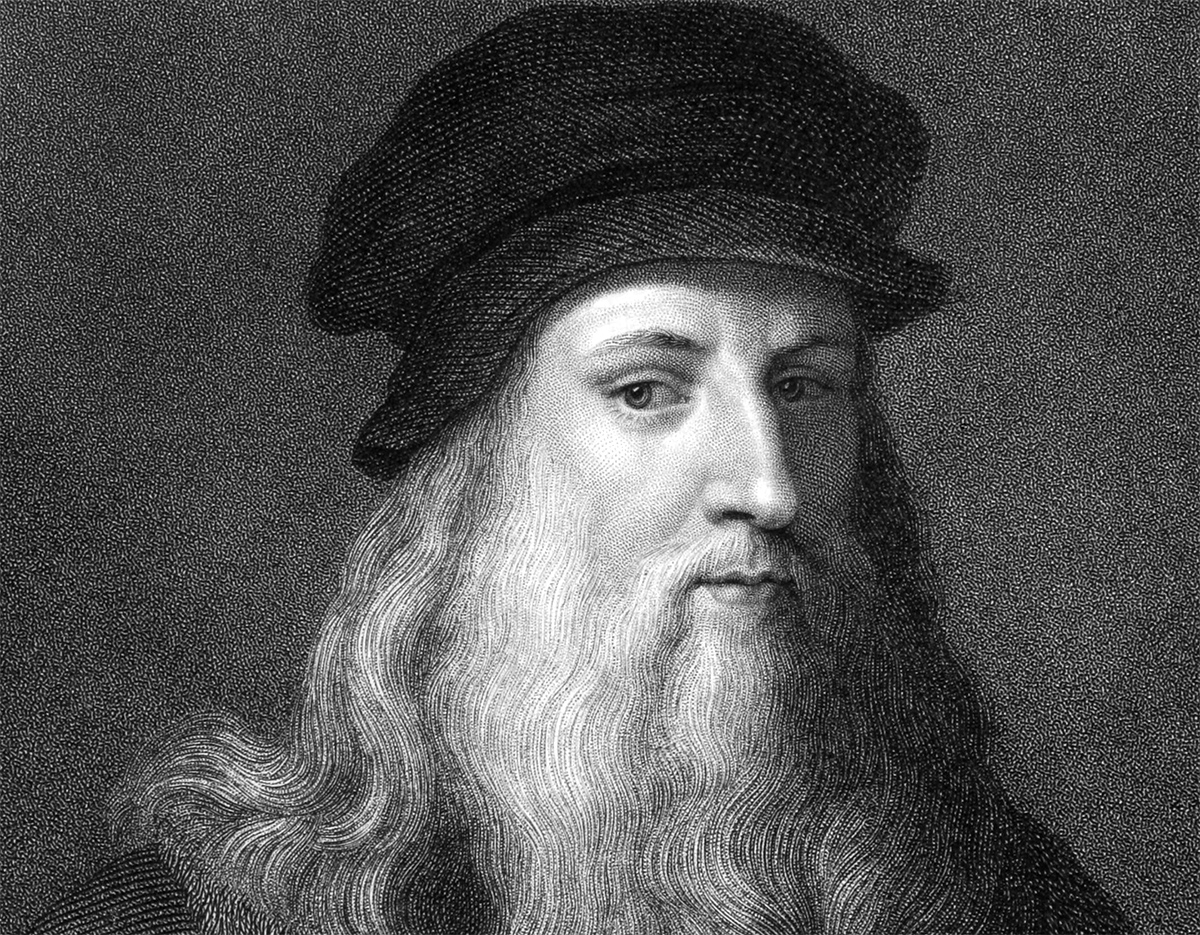
Leonardo Da Vinci portrayed when he was young
Despite the profound acquaintance and friendship that bonded him to Donato Bramante and Giuliano da Sangallo, who were both working those years in the building of Saint Peter's, Leonardo didn't receive any pubblic commission.
While in Rome Raphael was frescoeing the Papal apartments and Michelangelo was highly thought of in the Pope's environment, Leonardo was studying mecanics, optics and geometry.
Besides the project of the proclamation of the Pontine swamplands, the scientist was interested in the arrangement of the port of Civitavecchia because Pope Leo X decided to fortify the port in October 1515, during one of his visits.
This piece of news is reported in the "Lifes" by Giorgio Vasari, where he talks about the Pope's visit to Civitavecchia the 1st October 1515 accompanied by brave architects, Antonio da Sangallo among them, to check the possibility to fortify the city building city walls.
Vasari reports that during his inspection the design submitted by Sangallo was so wonderful that all of those present, including the Pope, agreed it was great.
It is not clear whether Leonardo was that day by the Pope or not, but for sure the genious was present in the area of Civitavecchia, from where he then departed with the whole Papal court towards Bologna and Florence, as described by Vasari, Guicciardini and other peer historians.
THE CODEX ATLANTICUS
Even if it's not clear that Leonardo took part in the Pope's visit to Civitavecchia, the fact that he passed through Civitavecchia and his designs for the Port are proved by 2 leaves contained in the Codex Atlanticus, the largest set of writings and drawings by Leonardo.
The "Codex Atlanticus" contains the whole intelectual life of Leonardo from 1478 to 1519 and it gathers his precious contributions to mechanics, mathematics, astronomy, botanics, geography, anatomy, physics and architecture.
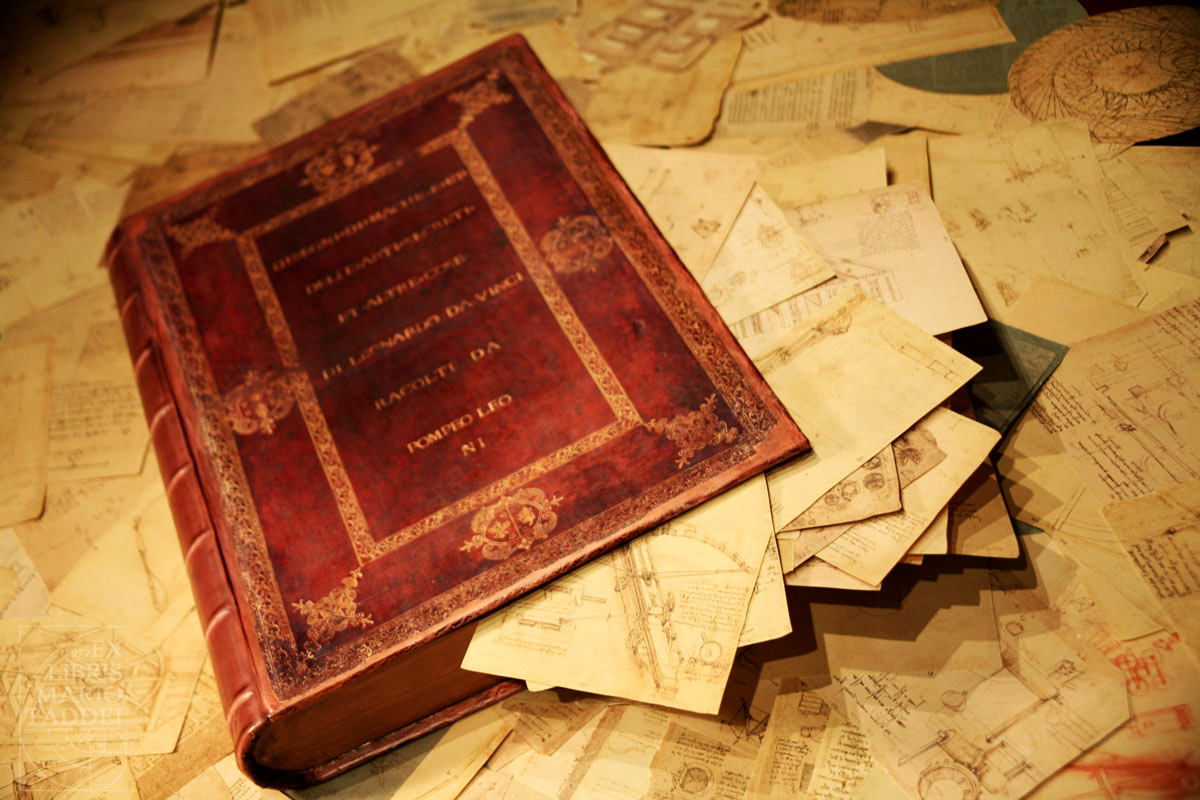
The manuscript Codex Atlanticus by Leonardo Da Vinci
After endless ups and downs, like a series of restoration works (the latest in 1968), the Codex Atlanticus is today preserved in the Sala del Tesoro of the Biblioteca Ambrosiana in Milan.
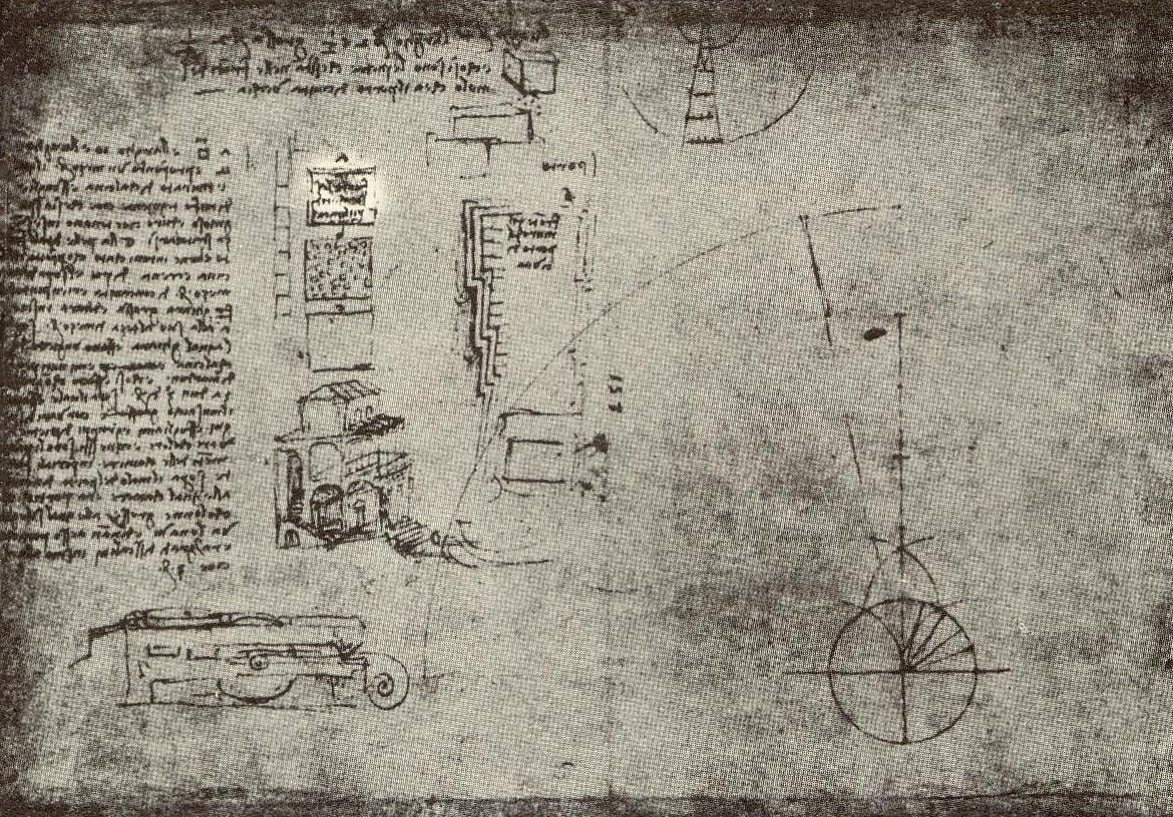
Codex Atlanticus by Leonardo Da Vinci: leave n.63
In the leave n° 63 of his Codex, Leonardo wrote about a two storey building with a flight of stairs descending into the sea, located in the port, mentioning the Imperial Rooms.
Many local scholars believe that the port under construction could have been enclosed in the Imperial Palace or viceversa.
In the design are reported some sketches and texts about the port of Civitavecchia, which Leonardo visited in the Spring of 1514 and which make hi concentrate his attention on old Roman buildings.
Leave n° 271 talks instead in greater detail about the Roman Harbour, since Leonardo drew the Port of Civitavecchia, next to studies about weights, geometry of the triangles and many arithmetical operations.
Actually, in his design strucks the fact fact that Fort Michelangelo (Fortezza Giulia) is drawn in the left, still under construction, and the Roman Harbour in the right, with theships of which would later be the re-formed Papal fleet wanted by Sixt V.
The arsenal, already thought by Sangallo inside of the harbour, would be built almost a century later next to the Fortress by Gian Lorenzo Bernini.
Leonardo's studies between late 1513 and early 1514 were made on request of Bramante himself, who seeked advise and ideas for his new project for the port and the Fortress of Civitavecchia. He could, however, not finish it since he suddenly died.
As a consequence of great architect Bramante's death, Leo X, Pope from 1513 to 1522, went back to Civitavecchia in January and then in March 1514, entrusting to Giuliano Leno and Antonio da Sangallo to finish building Bramante's Fortress and the walls of the port and the city. They also made the bastion and Porta di Roma.
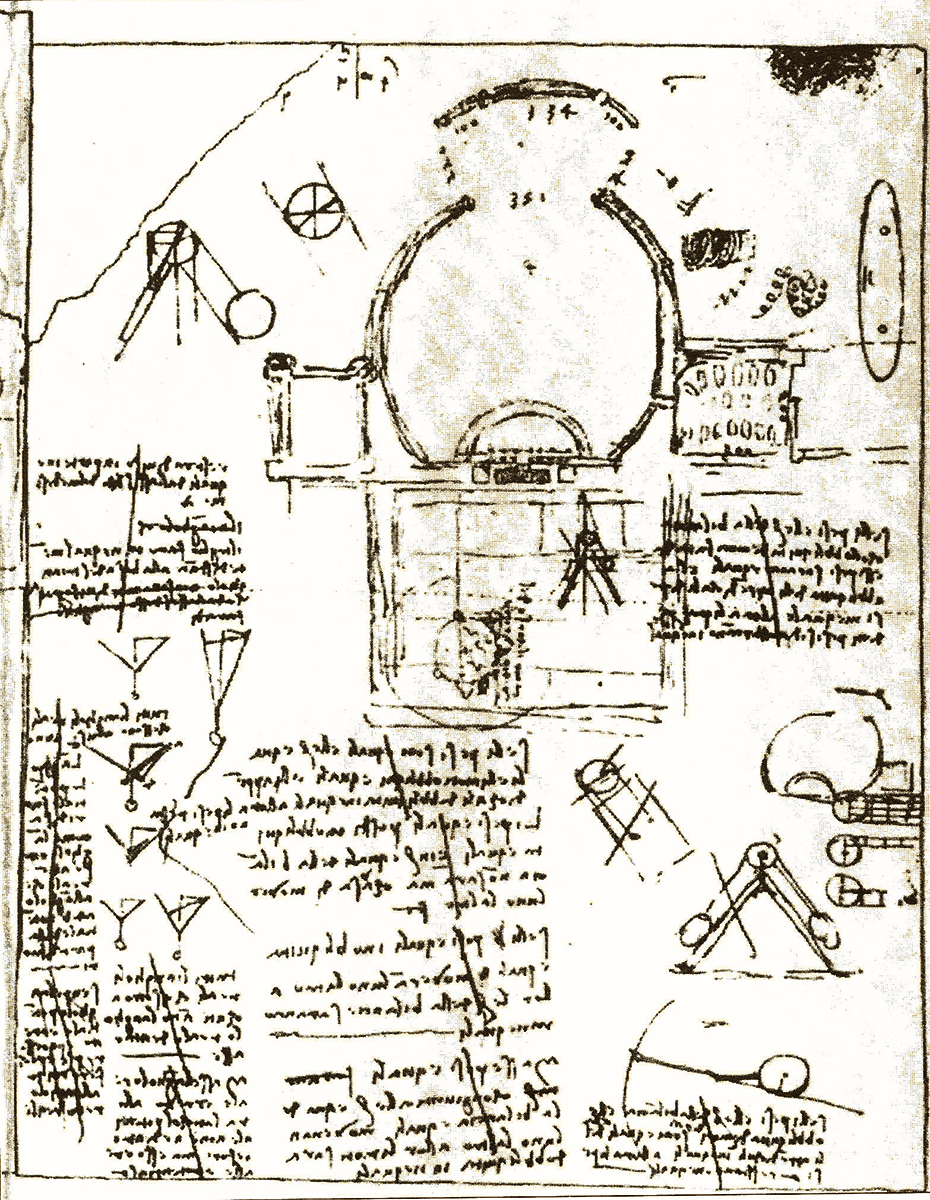
Codex Atlanticus by Leonardo Da Vinci: leave n.271
IN CONCLUSION
Now, while it is true that Leonardo's sketches inspired the fortification and the Port of Civitavecchia's general layout, if we take a deeper look (leave n.271 of the Codex Atlanticus), don't they remind you of some other great elliptical building that was built about 100 years afterwards in Rome under the papacy of a different Pope, Alexandre VII?
Right, the comparison might seem rash, but it is true indeed that those years Bernini had been commissioned by Alexandre VII himself to build the Church of Saint Peter, a work symbolising an ecumenical embrace and a safe shelter: a safe port for all the faithful.
Lying in wait for further historic proofs, we like to think that the Historic Port of Civitavecchia, thanks to some Leonardo Da Vinci's intuitions, inspired also the monumental colonnade of Saint Peter's Square in the Vatican.
So, what do you think?
by Roberta Galletta
*from "La Darsena Romana-Il Porticciolo di Civitavecchia" by Roberta Galletta.
Civitavecchia, 14 February 2014.



 PORT MOBILITY CIVITAVECCHIA
PORT MOBILITY CIVITAVECCHIA













